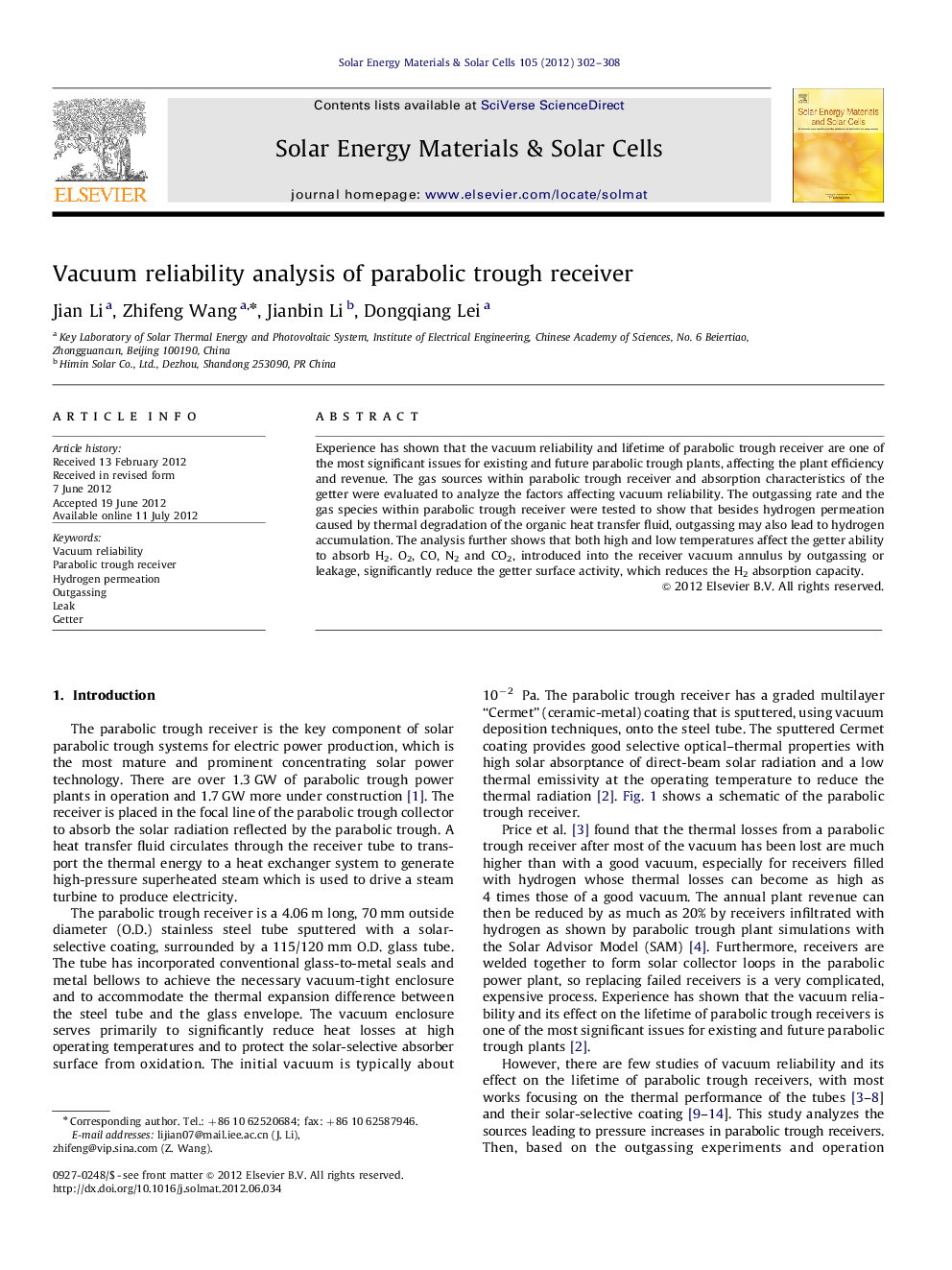| Article ID | Journal | Published Year | Pages | File Type |
|---|---|---|---|---|
| 78983 | Solar Energy Materials and Solar Cells | 2012 | 7 Pages |
Experience has shown that the vacuum reliability and lifetime of parabolic trough receiver are one of the most significant issues for existing and future parabolic trough plants, affecting the plant efficiency and revenue. The gas sources within parabolic trough receiver and absorption characteristics of the getter were evaluated to analyze the factors affecting vacuum reliability. The outgassing rate and the gas species within parabolic trough receiver were tested to show that besides hydrogen permeation caused by thermal degradation of the organic heat transfer fluid, outgassing may also lead to hydrogen accumulation. The analysis further shows that both high and low temperatures affect the getter ability to absorb H2. O2, CO, N2 and CO2, introduced into the receiver vacuum annulus by outgassing or leakage, significantly reduce the getter surface activity, which reduces the H2 absorption capacity.
► Outgassing may be another source leading to hydrogen accumulation. ► Degassing temperature of the receiver should be higher than operating temperature. ► Leak rate of the receiver is suggested to be lower than 5×10−10 Pa m3/s. ► It is not good for the getter to absorb H2 at high or low temperature. ► Outgassing and leakage have important effect on vacuum reliability of the receiver.
